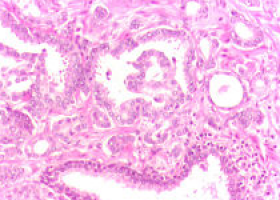
Potential for breakthrough in diagnosis and therapy of melanoma
Belgian scientists have revealed a remarkable link between malignant melanoma and a non-coding RNA gene called SAMMSON.
The SAMMSON gene is specifically expressed in human malignant melanoma and, strikingly, the growth of aggressive skin cancer is highly dependent on this gene.
The conclusions could pave the way for improved diagnostic tools and skin cancer treatment.
The study, led by professor Jean-Christophe Marine (VIB/KU Leuven) and professor Pieter Mestdagh (UGent), is expected to cause quite a stir after its upcoming publication in the leading scientific journal Nature.
While a large share of the human genome has long been considered ‘junk DNA’ because it doesn’t contribute to protein coding, recent insights indicate that it does produce many non-coding RNAs that play important roles in essential biological processes and diseases. The labs of prof.
Marine (VIB/KU Leuven) and prof. Mestdagh (UGent) have been studying the contribution of non-coding RNA genes in cancer for a couple of years now. They are particularly interested in the long types of non-coding RNA (lncRNA) genes.
Screening for lncRNA genes in cancer
To assess the importance of specific long non-coding RNA genes in skin cancer development, the VIB lab joined hands with the department of paediatrics and medical genetics at Ghent University.
The Ghent team, led by Pieter Mestdagh, had performed a large screening to study the expression of numerous lncRNAs across different cancer types. This screening identified SAMMSON as a melanoma-specific lncRNA.
Pieter Mestdagh (UGent): “our research showed that the long non-coding RNA gene SAMMSON is specifically expressed in human melanomas and duplicated or amplified in about 10% of the cases. In addition, SAMMSON was nowhere to be found in melanocytes, the normal melanin-producing cells, nor in any other normal adult tissue. This unique expression profile of SAMMSON led us to hypothesize that this gene might play an important role in the etiology of melanoma.”
The VIB team confirmed that SAMMSON is expressed specifically in more than 90% of human malignant – and not in benign – melanoma clinical samples. In addition, they showed that the SAMMSON gene is activated by the melanoma-specific transcription factor SOX10, explaining its melanoma specific expression pattern.
Melanoma addiction to SAMMSON
Moreover, the VIB scientists discovered a remarkable dependency of melanoma cells on SAMMSON expression.
When reducing the presence of SAMMSON in melanoma cultures, cancer cells rapidly and massively die off, irrespective of the type of melanoma.
This led to the key conclusion of a ‘SAMMSON addiction’, reflected in the paper’s title: “Melanoma addiction to the lineage-restricted lncRNA gene SAMMSON”.
Jean-Christophe Marine (VIB/KU Leuven): “In both in vitro and pre-clinical studies in mice, we have proven that blocking SAMMSON through targeted antisense molecules drastically reduces the growth of melanoma. Importantly, we have also discovered that SAMMSON is recruited to mitochondria, an organelle that provides energy to the cancer cells. By promoting degradation of SAMMSON, these antisense molecules disrupt the vital mitochondrial activity, which stops the tumor’s growth. In other words: SAMMSON addiction is a clear vulnerability that we can combat through targeted therapy, without affecting the normal cells from the host or patient.”
Next steps for clinical trials
Further research will be necessary to firmly establish the study’s hypothesis that SAMMSON can serve as a biomarker of melanoma malignancy. As the SAMSSON gene is not expressed in benign melanoma, its occurrence could be a key factor in developing new diagnostic tools that may dramatically improve melanoma prognosis.
Perhaps more importantly, the results of this UGent-VIB/KU Leuven collaborative effort can serve as a solid foundation towards new skin cancer treatments. The same group of researchers will soon start toxicology studies and is now initiating talks with various industrial players to explore mutually beneficial future collaborations.
Reference: Leucci et al., Melanoma addiction to the lineage-restricted lncRNA gene SAMMSON, Nature (2016)
Source: VIB - Flanders Interuniversity Institute for Biotechnology
The World Cancer Declaration recognises that to make major reductions in premature deaths, innovative education and training opportunities for healthcare workers in all disciplines of cancer control need to improve significantly.
ecancer plays a critical part in improving access to education for medical professionals.
Every day we help doctors, nurses, patients and their advocates to further their knowledge and improve the quality of care. Please make a donation to support our ongoing work.
Thank you for your support.